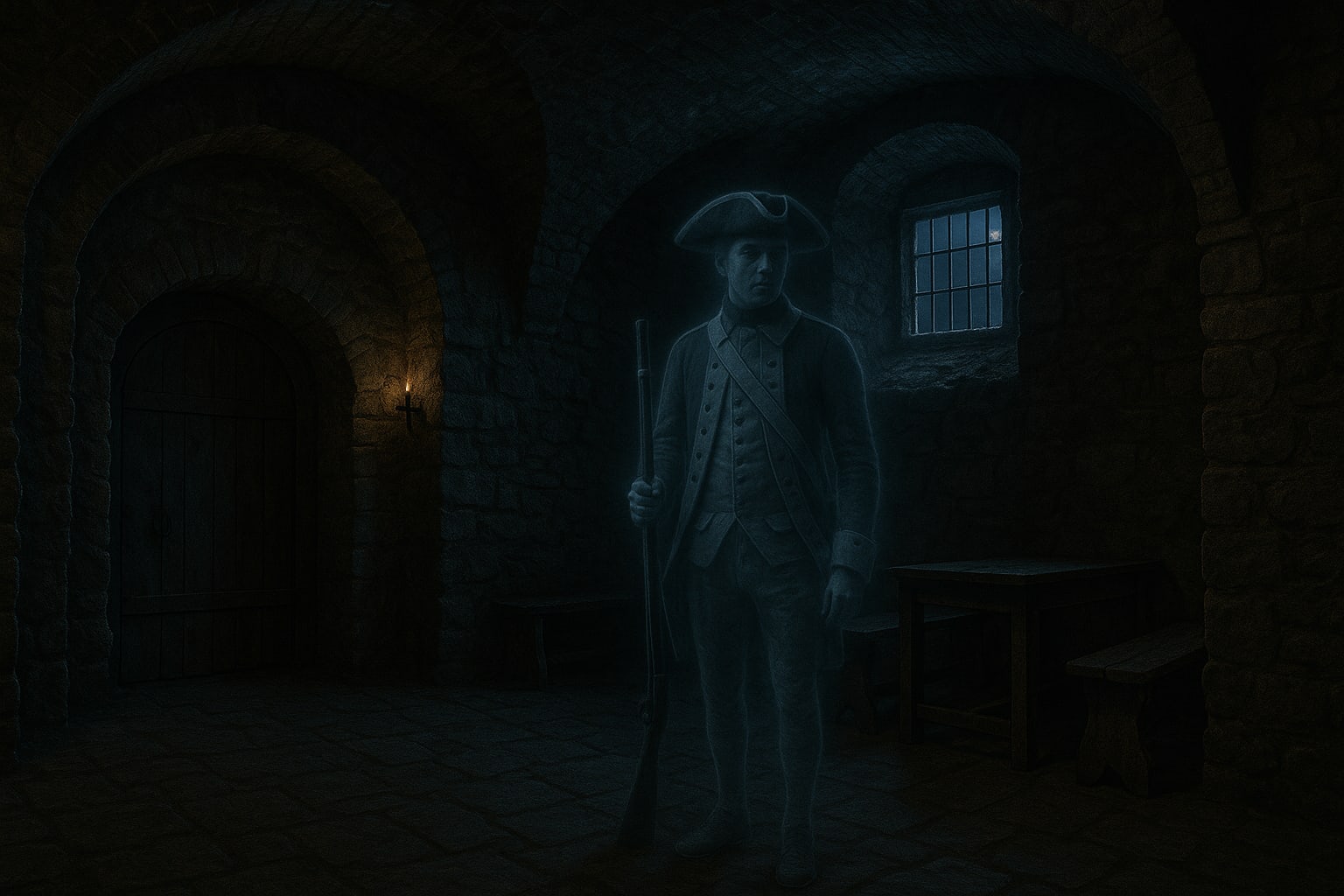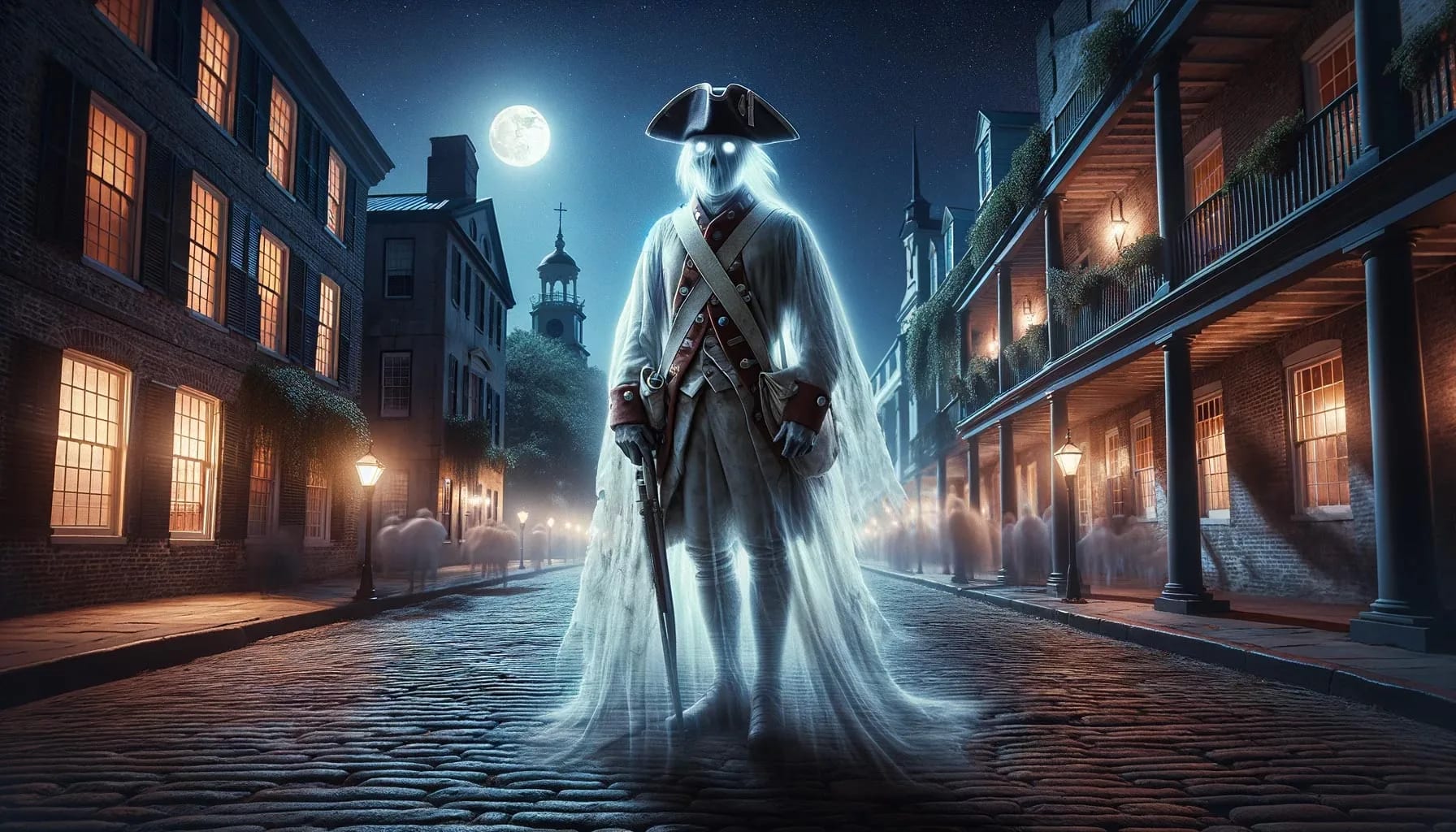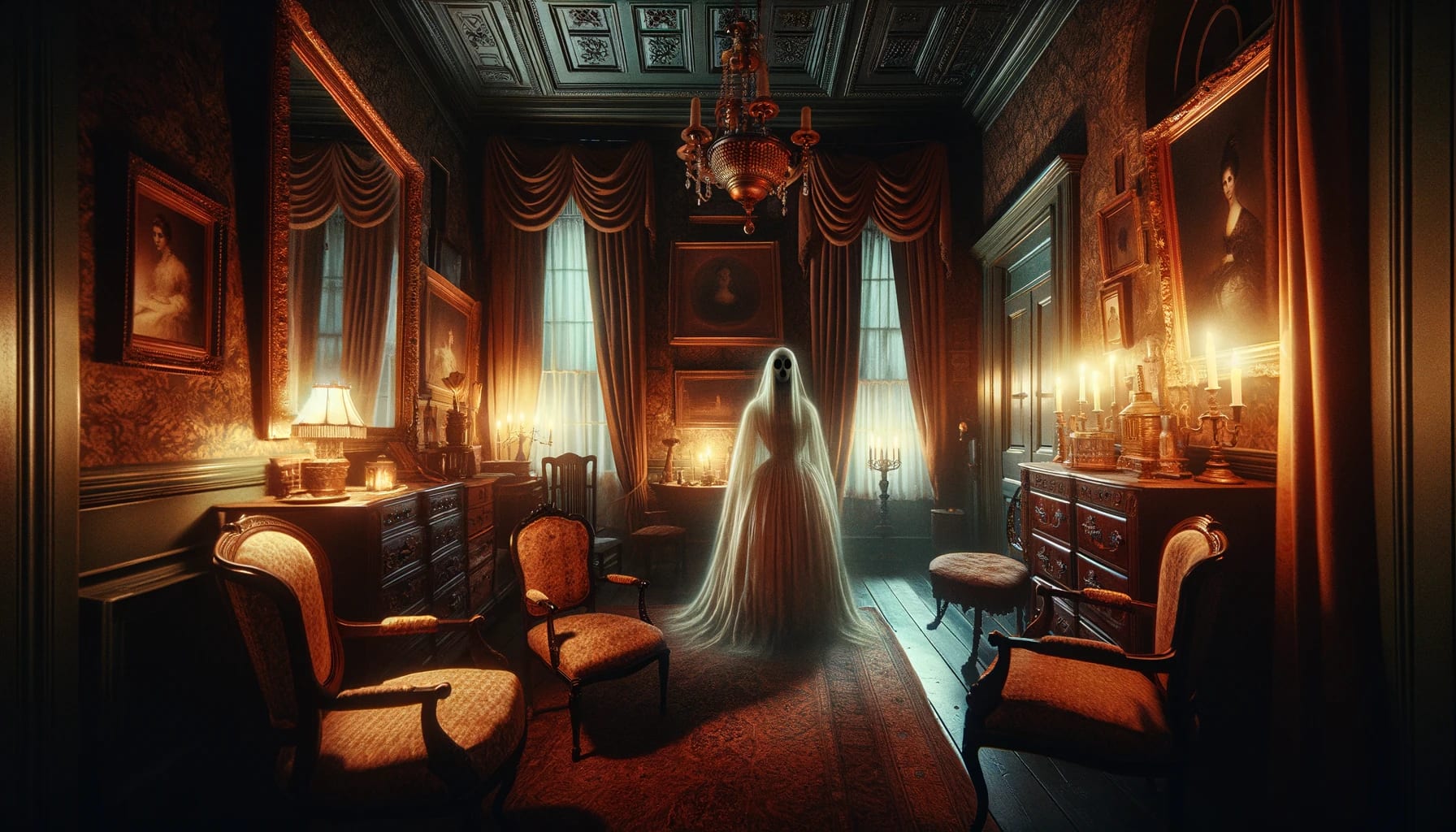The Haunted Exchange & Provost Dungeon
122 E Bay St, Charleston, South Carolina, 29401
No historical landmark in Charleston, South Carolina, is as well-recognized as the Old Exchange and Provost Dungeon at 122 East Bay Street.
From its elegantly Georgian appearance to the deeply troubled and haunted basement beneath the street level, the Old Exchange and Provost Dungeon has been one building which has truly lived historic Charleston.
And, by all accounts, it continues to live in the past every day. Ghosts are said to roam its stately halls, and the startling cries of long-dead prisoners in the dungeon can still be heard.
Today, the combined Old Exchange and the Provost Dungeon is now a museum which offers daily tours from 9-5pm. If these walls could talk, the secrets we would learn . . . Well, it's safe to say that these walls would be haunted.
But who is haunting the Old Exchange and Provost Dungeon? Read on to find out.
The History of the Old Exchange and Provost Dungeon
From the very start of Charleston's history, this Antebellum city has been influenced by the British. (It naturally helps that the British were the first Europeans to settle the colony). But it's a matter of how very British Charleston began as that would later affect the Old Exchange and Provost Dungeon.
To put it into perspective:
In 1670, two English ships sailed the ocean blue and entered what would later be known as Charleston Harbor. They subsequently developed a city which directly reflected Restoration England--the England which they had left for new opportunities in the American Colonies.
Their plan was to build a miniature of London. An aristocratic, English countryside inhabited by the landed gentry.
Unfortunately, for fortunately depending on the way you look at it, 17th century Charles Towne proved a difficult hardship altogether.
As one might expect, pirates tend to be perceived as a bit of a threat against a city.
Before the Exchange and Dungeon: Pirates
Before the beautiful Georgian building was erected in the latter 1700s, the site of the Old Exchange was not void or empty.
There once stood the Half-Moon Battery, and later on the 'Court of Guard,' as well. But it was in 1718 that the dungeon below the Battery withstood its first true pirate captives. Men like the legendary Blackbeard (although this more likely legend) or the gentleman pirate Stede Bonnet (this is not legend).
The imprisonment followed a lengthy back-and-forth stalemate during the summer of 1718. Blackbeard had blockaded Charleston Harbor, encapturing local citizens as prisoners until the Charlestonian government agreed upon the blackmail. Blackbeard wanted medicine (a cure-all for venereal diseases naturally), and refused to release his prisoners until the medicine was handed over. In the end, Blackbeard received what he wanted--he returned the prisoners with lighter pockets and less clothes.
The battle between Charleston and the pirates were not over. Stede Bonnet, a gentleman pirate who had bought his way into the business, teamed up with Blackbeard and ultimately lost northwards of Cape Fear. The Charlestonian Captain Rhett brought their pirate prisoners back to Charleston.
The crew was imprisoned in the Guard House (the Provost Dungeon) while Stede Bonnet received a mite better treatment at the Provost Marshall's house nearby. (Bonnet escaped briefly, disguised as a woman, but quickly found himself back in Charleston).
Until their executions, the crew were stuck in the dank, dark halls of the Provost Dungeon (then, the Half-Moon Battery). One by one they met their fate, the noose, at White Point nearby.
As for Stede Bonnet, he was tried and sentenced "to be hanged by the neck till you are dead."
Building the Old Exchange
For nearly one hundred years, the Half-Moon Battery and then later the Court of the Guard functioned as the centre of trade in Charleston. Within that same time frame, Charles Towne had become the fourth largest port city in the American Colonies. (I.e., one more prominent reason as to why pirates hung around so often!)
But with a growing port came a growing economy. By 1767, the budding city's merchants and investors banded together to approach the local government. They wanted an "Exchange or Custom House" equipped to accommodate the growing trade and the new merchant businesses sprouting up every day.
In 1771, the City finally agreed. Architect William Rigby Naylor was hired for the initial design, and Peter and John Adam Horlbeck, master masons and also German immigrants, were similarly hired for their building experience.
They all agreed upon building the Old Exchange at the foot of Broad Street, nearby the all-important waterfront.
Interestingly enough, during the construction process it was decided that all adjacent street markets were to be moved. The reason? Because they were simply too "indecorous" to be nearby the (new) Old Exchange.
Since its construction, many scholars argue that the Old Exchange is one of the three most important American buildings built during the Colonial era. The other two are: Philadelphia's Town Hall and Boston's Faneuil Hall.
Leading Up to the American Revolution
Ever hear of the Boston Tea Party? (And we aren't referring to the modern-day political party here). No, the real Boston Tea Party, when in 1773, Boston's Sons of Liberty 342 chests of tea into the Boston Harbor.
Well, those Bostonians were not the sole American colonists to strike back against the British Parliament's Tea Act of 1773. The bill had been designed to save the weakening East India Company from lowering its tea tax and granting it total control of the American tea trade. The Act itself, "allowed the East India Company to undercut even tea smuggled into America by Dutch traders, and many colonists viewed the act as another example of taxation tyranny."
In Charleston, 13 days before the Bostonians would dump their tea in a famous act of rebellion, Charlestonians called a meeting to the Old Exchange to discuss their course of action.
They all agreed against purchasing the 257 chests of tea which had arrived at the harbor with the East India Company. And, instead of unloading the two-hundred-plus chests, they stored all of the tea in the Exchange building.
No doubt there were some colonists which desperately missed their tea, but in the end, the anti-tea rally stood strong.
Isaac Hayne
The Exchange's most notorious execution came in 1781 with the advent of the American Revolution.
Isaac Hayne was born in 1745 to a relatively well-off family. He married Elizabeth Hutson, the daughter of the Reverend William Hutson, and the couple had seven children. Like Hayne's own father, Isaac was elected to present St. Bartholomew's Parish.
Prior to the outbreak of the Revolutionary War, Hayne enjoyed a very nice living. He owned, not only, an elegant mansion house four miles from Jacksonborough, but also two other plantations, Pear Hill and Sycamore, that attributed to 700 and 650 acres of his total land. Then, he owned more property in Beaufort, and even more in Charleston. He owned 6,377 acres in Up Country, and another 1,000 in Georgia.
Hayne was, if nothing else, a wealthy entrepreneur.
By 1776, in the midst of the Revolutionary War, Hayne became a captain in the militia.
What he did not realize, at the time, was that this shift in his allegiance would ultimately lead to his death.
The Workings of the Crown in Revolutionary America
Alliances were split amongst the supporters of the Crown and those who supported an independent land. Brothers and fathers often fought on opposite sides of the fence, with their mothers, sisters and wives caught in the midst of the battle.
But the Crown ultimately prevailed. Knowing that they may have some retreaters on their hands, Sir Henry Clinton, the British commander who had captured Charleston, threatened to confiscate the property of anyone who "continued to resist Royal authority."
Sir Clinton also promised protection for those who would support the British. South Carolinians were therefore put on "parole," in which case they could not hurt or harm the British's effort to quiet the rebellion. When Sir Clinton released parolees from parole on June 20th, 1780--those who did not swear allegiance to the King were deemed rebels.
Meanwhile, Isaac Hayne had reluctantly linked up with the British. He had so many properties, so much wealth, that to turn his back now would have proved a faulty move. He agreed, but with a few stipulations.
He wrote that: "that he wd. submit to their government, & take the oath, but, must openly declare, that he shd. consider it as obligatory, only as long as their Protection wd. really be of benefit to him, or, till the Americans wd. again get possession of the Country."
In short: he was willing to support the Crown while they occupied the Charleston area, but as soon as the Continental forces pushed back and pushed them out, he would no longer be tied to the Royal militia.
Isaac Hayne's downfall would follow.
Capture and Execution of Isaac Hayne
The success of Major General Nathanael Greene ultimately allowed Hayne to believe that the British were on the outs and he was free of his obligatory allegiance to them. His binds to South Carolina were much stronger, and he became a colonel in the local militia.
Not a few months later, Isaac Hayne's "treason" cemented his fate when he captured General Andrew Williamson, an American who had joined the British forces. The Crown began to fear that Williamson might be hanged, and set out to then capture Hayne.
By July 26 of that year, Lord Francis Rawdon and his fellow Royal supporter, Balfour, decided that Isaac Hayne should be made to be an example for what happened to those who commit treason.
Hayne was promptly imprisoned in the Provost Dungeon. Notes from his attorney or his neighbors surfaced. Hayne begged Rawdon and Balfour to let him see his children one last time. He begged the Council. He begged his attendants.
Hayne was denied every time.
On the day of his scheduled execution, citizens gathered to stand shoulder to shoulder in the streets. They stood, anxiously waiting, to see one of their own dance in the breeze for only standing by his South Carolinian brethren.
As Hayne was led up to the gallows, a fourteen-year-old boy Isaac Neufville said that the prisoner "was escorted by a party of soldiers to a gallows erected without the lines of the town with his hands tied behind, and there hung up till he was dead."
The Federal Post Office
For most of the 19th century, the Exchange functioned as the Federal Post Office. In 1791, George Washington (yes, that George Washington) had appointed a new postmaster to the Exchange. Less than thirty years later, the 1825 almanac reported that the Charleston Post Office was "the best and most convenient in the US."
Until the early 1840s, everything was relatively smooth sailing. Charlestonians visited the Post Office to pick up their mail, and the postmaster, Alfred Huger, held the reins.
When northern abolitionists began sending anti-slavery literature to the Charlestonians via the post office, those same Charlestonians were decidedly not pleased. They immediately wanted to see that literature destroyed.
A mob attempted to break into the post office and commence with the destruction, but a city guard stopped them. A second group had more success sneaking in during the dead of night. They stole the leaflets and burned them in front of the Citadel, or current day Madison Square.
Another group planned a follow up. Alfred Huger was not amused. He stood at the helm of his workplace, "ready [with] his shotgun to die, if necessary, before he would permit such another outrage."
Huger refused to allow the mob inside, and told them that he would deliver their mail to their respective houses. What they did with the literature after that was not his problem.
From 1849, letter carriers began delivering mail directly to the residents of Charleston. It was the first mailing service of its kind, and for each letter delivered the recipient was charged a penny. This earned it the nickname the, 'penny post.'
Two years earlier, the Exchange was used to create US postage stamps as well.
So, today, should you have any complaints to take up with the USPS, blame 1849 Charleston for your troubles--or your successes!
The Ghosts of The Old Exchange and the Provost Dungeon
The Old Exchange and its accompanying dungeon spent the majority of the 20th century under the threat of redevelopment, until being saved for preservation by the Rebecca Motte Chapter of the Daughters of the American Revolution.
As of 1981, the Old Exchange and Provost Dungeon officially opened as a historical museum. It is a museum that highlights a history or both pirates and proud patriots chained within its damp, dark walls.
And it is this same history that manifested a paranormal aura today, in which those who visit can help but wonder … Have the spirits of those long-ago prisoners and rebellers ever truly left?
Ghostly Experiences in the Provost Dungeon
Unspeakable tortures. Endless nights spent below street level. Is it any wonder why many believe the Provost Dungeon to be haunted?
From 1680 to 1767, Charleston remained a walled city, with the intent to keep out the pirates and marauders. Those who were caught, such as Stede Bonnet and his merry crew of pirates, were shuffled down into the Dungeon until their execution time rolled around. When entering the dungeon, you can still see the remains of the original city walls … and if you are lucky enough, you may also catch a glimpse of the no longer living.
Down in the dungeon, people have reported hearing terrifying cries and screams, as well as harrowing moans as though someone is in great pain. But it is also down in the Dungeon that reports of seeing chains swinging by unseen forces have surfaced over the years. For those lucky enough to catch a glimpse of this paranormal phenomena, they are quick to point out that no one ever touches the chains before they begin their swaying.
Dancing orbs are not uncommon, and neither are the chilling cold spots that many report.
It seems that the spirits lingering in the Provost Dungeon are not content to stay hands off, however. A number of visitors have reported being pushed or feeling invisible hands wrap around their throats.
Down in the dungeon, it was not uncommon for the dead to be left to rot among the living … leading to spirits that are certainly not the kindest in the afterlife.
Ghostly Experiences in the Old Exchange
Fortunately, the spirits who inhabit the Exchange on the upper floors are not nearly as malevolent.
On more than one occasion, visitors have approached what they believe to be is a staff member dressed in Revolution-period garb. Only, the moment they step too close, it is only to see the staff member vanish before their very eyes.
In comparison to the dark entities roaming the dungeons, disappearing staff members may be shocking but it is a better experience than what can happen below in the basement.
Visiting the Old Exchange and Provost Dungeon
Today, the Old Exchange and Provost Dungeon is open to guests each day of the week from 9-5pm. It is perfect for those hoping to learn about Colonial and Revolutionary Charleston … as for the spirits, we suggest keeping to the upper floors just to be on the safe side.
If you're visiting Charleston, you owe it to yourself to check out this historic landmark. Located on East Bay Street, it is easy to find and just as easy to get to.
We encourage everyone to join them for a tour of the Exchange and the Dungeon. It is a unique feeling, being in a location where so much history happened. For more information about the Old Exchange and Provost Dungeon, please visit their website.

The dungeon chambers where patriots were tortured

Chains that still hold the spirits of prisoners



